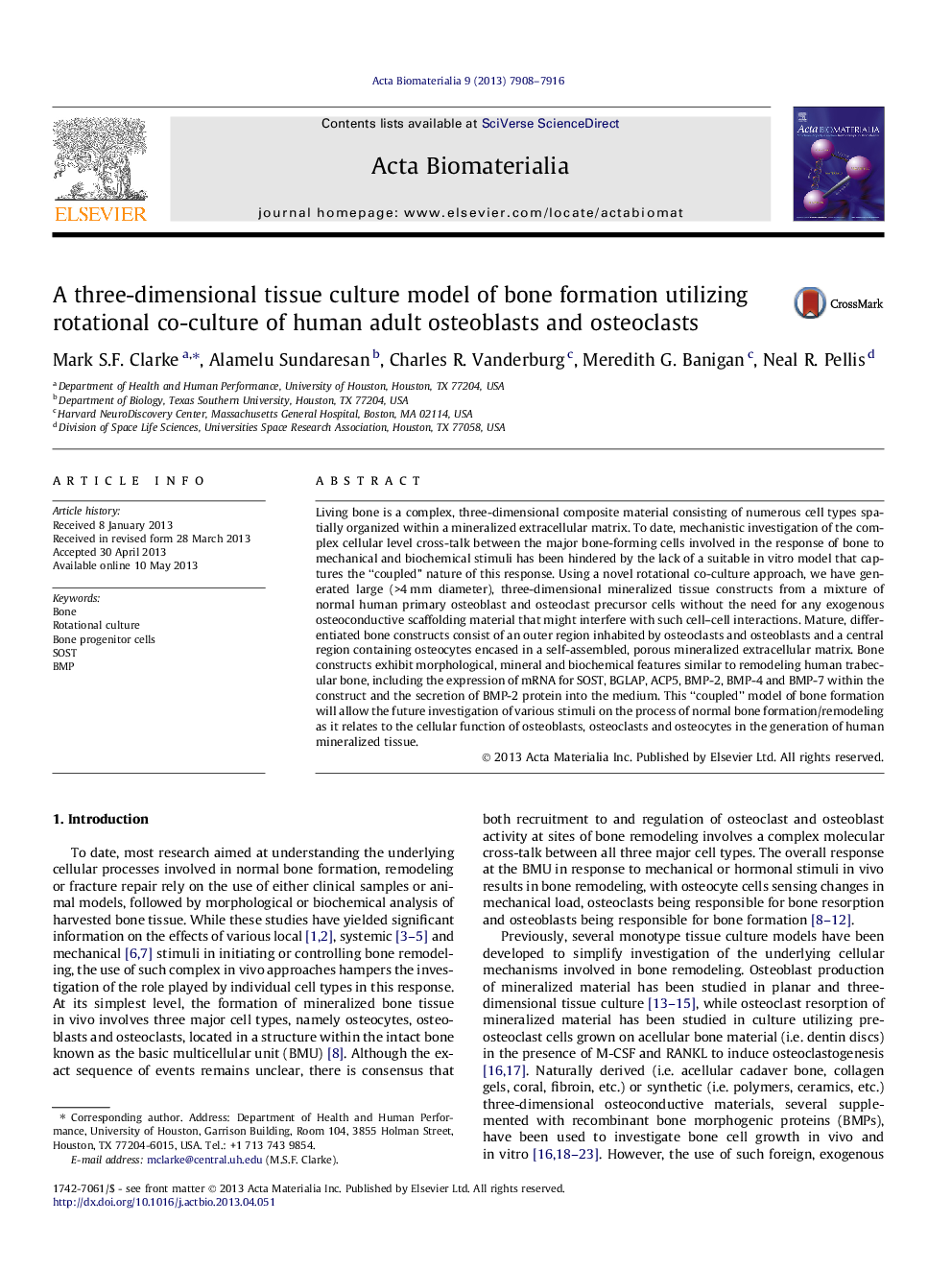| Article ID | Journal | Published Year | Pages | File Type |
|---|---|---|---|---|
| 10159625 | Acta Biomaterialia | 2013 | 9 Pages |
Abstract
Living bone is a complex, three-dimensional composite material consisting of numerous cell types spatially organized within a mineralized extracellular matrix. To date, mechanistic investigation of the complex cellular level cross-talk between the major bone-forming cells involved in the response of bone to mechanical and biochemical stimuli has been hindered by the lack of a suitable in vitro model that captures the “coupled” nature of this response. Using a novel rotational co-culture approach, we have generated large (>4Â mm diameter), three-dimensional mineralized tissue constructs from a mixture of normal human primary osteoblast and osteoclast precursor cells without the need for any exogenous osteoconductive scaffolding material that might interfere with such cell-cell interactions. Mature, differentiated bone constructs consist of an outer region inhabited by osteoclasts and osteoblasts and a central region containing osteocytes encased in a self-assembled, porous mineralized extracellular matrix. Bone constructs exhibit morphological, mineral and biochemical features similar to remodeling human trabecular bone, including the expression of mRNA for SOST, BGLAP, ACP5, BMP-2, BMP-4 and BMP-7 within the construct and the secretion of BMP-2 protein into the medium. This “coupled” model of bone formation will allow the future investigation of various stimuli on the process of normal bone formation/remodeling as it relates to the cellular function of osteoblasts, osteoclasts and osteocytes in the generation of human mineralized tissue.
Related Topics
Physical Sciences and Engineering
Chemical Engineering
Bioengineering
Authors
Mark S.F. Clarke, Alamelu Sundaresan, Charles R. Vanderburg, Meredith G. Banigan, Neal R. Pellis,
